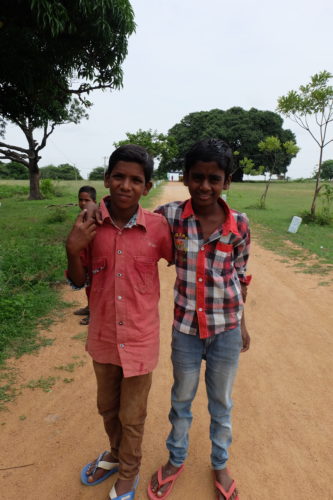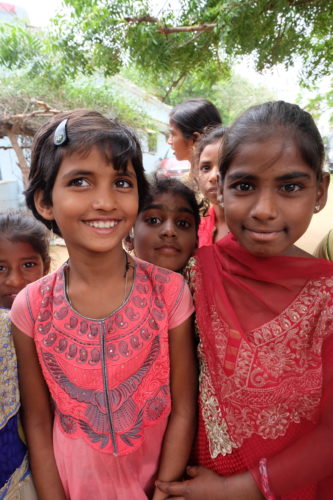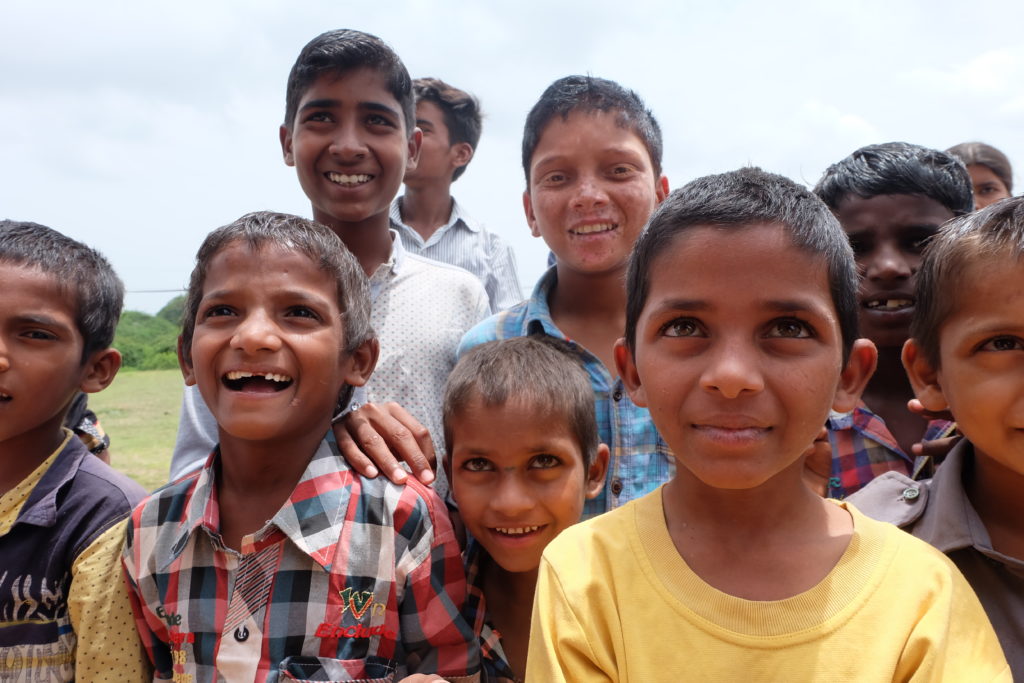I didn’t know what to expect upon arriving to India after having spent a week visiting our affiliated projects in Sri Lanka. India was a place of wonder to me. Most of what I knew about the country was statistical information about its enormous population and the extreme poverty Indians face; of the 1.2 billion people living in India, an estimated 23.6 percent of the population lives on the equivalent of $1.25 or less a day. I was curious to see what more I would come to understand about India on my first trip there, especially when it came to the differences between India and Sri Lanka in terms of educating children.
India’s literacy rate is only 63 percent, meaning many poor children are not being educated early in life, when it is crucial for them to be in school.
India was established in 1950 after gaining independence from Great Britain in 1947. A developing country, India has seen a lot of economic growth since the 1990s, and in more recent times, its unemployment rate has fallen, thanks to a focus on the retail industry, agriculture, mining, and information technology (IT). Despite the upward swing in the country’s economy, India is still considered to be one of the poorest countries in the world, according to the World Bank.

Children become good friends when they are living together at the Chandrakal Home.
Much of the poverty has to do with the inadequate education system in the country. Almost half of India’s population drops out of school by the age of thirteen, probably so that the adolescents can work to provide an additional income for their families. Unlike its neighboring country, Sri Lanka, where education is of the utmost importance, with a literacy rate of over ninety percent, India’s literacy rate is only 63 percent, meaning many poor children are not being educated early in life, when it is crucial for them to be in school.
Arriving in Hyderabad
When Luis Bourdet, our Director of International Programs, and I arrived in Hyderabad, the capital of the state of Telangana and the fourth most populous city in India, I expected the scene to be overwhelming. What I found instead was a modern airport, with an open design both inside and out. The highway leaving the airport felt just as airy – the traffic was light, and the road system was expansive and organized.
It didn’t feel much different from the experience I had when I arrived in Sri Lanka, except for one aspect – the amount of housing that we saw on either side of the highway was astounding. It was the first indication that we were in an incredibly populated part of the world, which was unlike Sri Lanka, whose population is only around 21 million people – or 5.7 percent of India’s population. The landscape was blanketed with concrete apartment buildings as far as I could see, many of them twenty stories high; and this scene went on for an hour, before we reached the city.
Once we arrived in Hyderabad, the differences between it and Colombo, the capital city of Sri Lanka, were more obvious. Whereas we didn’t see beggars on the streets in Colombo, we saw multiple ones at each stoplight in Hyderabad. The traffic was dense and chaotic, and smog from the cars was thick in the air. It was more of what I had expected of India – busy and crowded, with signs of extreme poverty, which we didn’t see in Sri Lanka.
Doing more than sponsoring kids
Early the next morning, Luis and I left to travel the four hours it would take us to get to the Chandrakal Methodist Boarding Home, which is run by the Methodist Church of India. Located in the western region of the state in the small town of Chandrakal, the home was founded in 1950 by an American missionary named Lillian Woodbridge. With a mission to educate boys and girls from needy families, the home currently boards around 500 children, and is much larger than any of our projects in Sri Lanka.
As we left Hyderabad, the highways turned into narrow rural roads, where we saw livestock and large fields of rice and corn crops. Hindu temples lined the newly-paved road. Luis told me that the last time he was in India, the roads were not nearly as nice, and he was pleased to see the progress in the country – progress that we had also seen in the newly-built roads and highways in Sri Lanka.
When we arrived at the home, we were greeted by the children, as well as by our Volunteer Coordinator, Pearl. Pearl has served the church for fifteen years and has been at the home for three. As she showed us around the complex, she explained that there were a relatively even number of girls and boys living at the home who attend elementary, middle, and high school on the property.

Young girls who live at the Chandrakal Home
She talked about how if it weren’t for Children Incorporated sponsors, many of these children would never get the chance to go to school, and would never receive an education. It is a great relief for parents, who are mostly low-paid farmers, and who are unable to pay the entire monthly fee for room and board and tuition, to receive help through sponsorship.
Sponsorship isn’t the only way Children Incorporated has helped the home over the years – the high school building was built about ten years ago, thanks to one of our special donors, as well as an addition to one of the girls’ dorms. Our donors also purchased the cots on which the girls sleep; and a few years ago, Children Incorporated funds were used to purchase a generator so that the children could have electricity at night to study after dark. Since then, the home has installed permanent electricity, though the generator still comes in handy.
An old home in need of repair
I was impressed with how large the compound was, and how many buildings it contained; but everything other than the newly-constructed additions was very old and in need of a lot of repairs. I remembered that some of our projects in Sri Lanka are also in older buildings, but they are still in good shape. Some of the buildings at the Chandrakal Methodist Boarding Home looked as though they should be torn down and rebuilt entirely.
A few even looked unsafe to enter. Many of the classrooms are in need of roof repairs, and some of the rooves leak badly enough that the rooms are unusable. When Pearl told me that some of the buildings are more than sixty years old, I understood why they were in such bad condition – they hadn’t been repaired since they were constructed, when the home was founded.
Before we left, I asked Pearl about the difficulties of educating children in India. She said that many families want to send their children to school, but there are few schools near rural areas like Chandrakal. Unlike Sri Lanka, where there are schools close by for children to attend during the day, and then return to their families each afternoon, in India, children have to go far away to a boarding school and stay full-time, which parents often cannot afford.
There are just not enough schools for the number of children in the country, which makes it that much more difficult for those living in extreme poverty to get an education. It occurred to me then that although I was trying to compare the two countries because they were close to one another, they were worlds apart when it came to educating children.
***
HOW DO I SPONSOR A CHILD IN INDIA?
You can sponsor a child in India in one of three ways: call our office at 1-800-538-5381 and speak with one of our staff members; email us at sponsorship@children-inc.org; or go online to our donation portal, create an account, and search for a child in India that is available for sponsorship.

